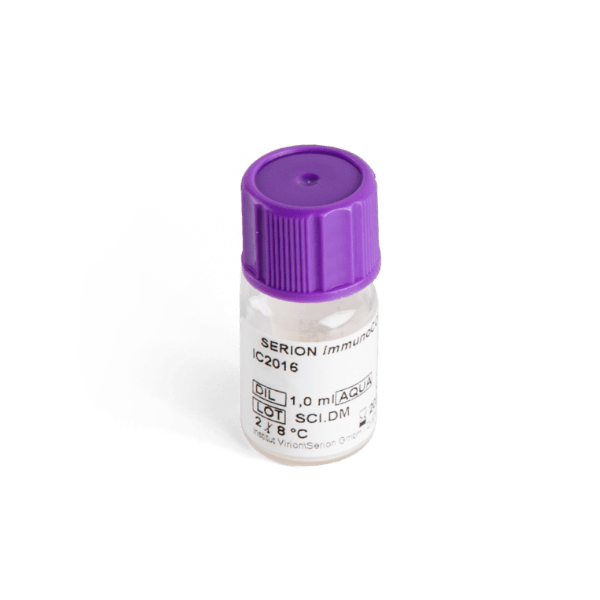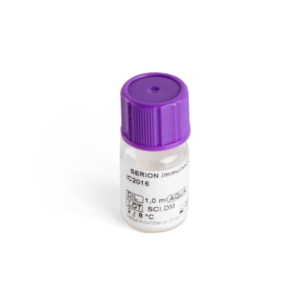| Weight | 1 lbs |
|---|---|
| Dimensions | 9 × 5 × 2 in |
| target | Parainfluenza Virus reactive IgG |
| species reactivity | Parainfluenza Virus |
| applications | ELISA |
| assay type | Indirect & quantitative |
| available size | 1 mL |
Parainfluenza Virus Human IgG Assay Control BC126G
$94.00
Summary
- Virion/Serion Diagnostic Kit Control for research use (RUO)
- Parainfluenza Virus Human IgG Assay Control, recombinant
- Applications: ELISA
- Suitable for IgG detection
- Ready-to-use; pre-diluted for SERION ELISA classic and SERION ELISA antigen assays
- 3 mL
Parainfluenza Virus Human IgG Assay Control BC126G
| kit |
|---|
| Research area Infectious Disease |
| Storage Store at 2-8°C. |
| Form liquid |
| Associated products Parainfluenza Virus Type 1 Antigen (BA1261VS) Parainfluenza Virus Type 2 Antigen (BA1262VS) Parainfluenza Virus Type 3 Control Antigen (BA1263VS) Parainfluenza Virus Human IgA Assay Control (BC126A) Parainfluenza Virus Human IgG Assay Control (BC126G) Parainfluenza Virus IgA ELISA Kit (ESR126A) Parainfluenza Virus IgG ELISA Kit (ESR126G) |
| target relevance |
|---|
| Organism Parainfluenza Virus |
| Protein names Parainfluenza Virus |
| Structure and strains Human parainfluenza viruses (HPIVs) are the viruses that cause human parainfluenza. HPIVs are a paraphyletic group of four distinct single-stranded RNA viruses belonging to the Paramyxoviridae family. These viruses are closely associated with both human and veterinary disease. Virions are approximately 150 250 nm in size and contain negative sense RNA with a genome encompassing about 15,000 nucleotides. |
| Detection and diagnosis While the majority of patients infected with Parainfluenza Viruses develop IgG antibodies, IgM antibodies are detectable in approximately 50% of cases. Thus, the specific detection of IgA antibodies should be performed analogous to other infectious diseases of the respiratory tract (e.g. Respiratory Syncytial Virus infections). Particularly in children under three years of age the combined use of IgG and IgA detection is recommended. |
Data
Publications
Warning: Cannot modify header information - headers already sent by (output started at /www/benchmarkantibodiescom_769/public/wp-includes/script-loader.php:3015) in /www/benchmarkantibodiescom_769/public/wp-content/plugins/shortcode-manager/shortcode-manager.php(453) : eval()'d code on line 3
Publications
| pmid | title | authors | citation |
|---|---|---|---|
| We haven't added any publications to our database yet. | |||
Protocols
| relevant to this product |
|---|
| BC126G protocol |
Documents
| # | ||
|---|---|---|
| Please enter your product and batch number here to retrieve product datasheet, SDS, and QC information. | ||
Only logged in customers who have purchased this product may leave a review.


Reviews
There are no reviews yet.